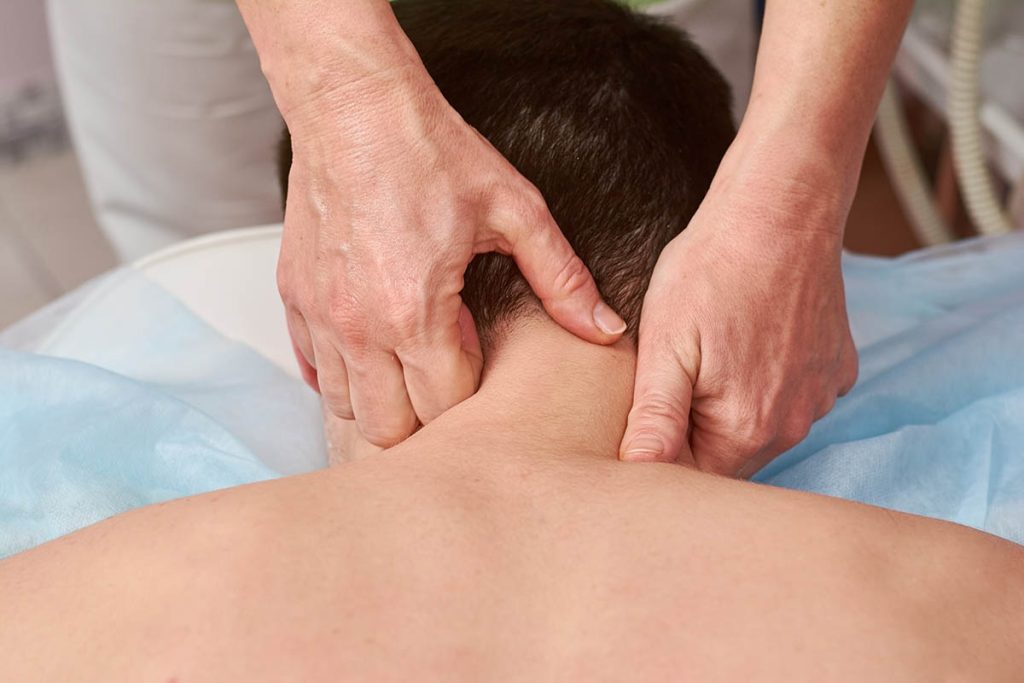What is a Spondylolysis?
Spondylolysis is a form of bone stress fracture that can occur in spinal vertebrae.
The stress fracture in spondylolysis most commonly occurs at the weakest part of the vertebral arch (the back of the vertebra) called the pars interarticularis, of which each vertebrae has two, one on each side of the vertebral arch.
The bone stress fracture in spondylolysis occurs as an end-result of ongoing stress to that part of the bone that it hasn’t been able to cope with. This is called bone stress. Bone stress can become painful (bone stress reaction) before it turns into a stress fracture, which makes it possible to pick up this condition before it progresses to a bone fracture.

What causes it?
The bone stress described above that leads to Spondylolysis is usually caused by repetitive loading – that is, a repetitive activity that puts strain on the vertebral arch. If this repetitive loading continues to stress the bone in this area and the bone is not able to recover, a stress fracture can occur, usually at the pars interarticularis.
Activities that can cause this repetitive loading are generally those that involve high impact. Examples include:
- Cricket (especially fast bowlers)
- Tennis (especially from serving)
- Gymnastics
- Ankle joint instability
- Soccer
- Diving
- Volleyball
- Ballet
- Swimming
- Weight-lifting
- Wrestling
The majority of cases are caused by sports (repetitive loading), but spondylolysis can also be congenital (ie born with it), degenerative (in older adults – from arthritis), or traumatic (from a specific incident that causes injury).
Common symptoms and symptoms:
Spondylolysis most commonly occurs in the vertebrae at the bottom of the spine (usually L5), in the lower back.
Common signs and symptoms include:
- Gradual onset of pain in the low back area that is worse after aggravating activities.
- May have occasional radiating pain into the buttock or back of the thigh.
- Bending to the side or to the back, or rotating through the spine may be painful.
- Localised tenderness and muscle spasming/guarding in the lower back

How long does it take to get better?
In most cases, with treatment symptoms will resolve in 6 – 12 weeks.
The length of time it takes to get better depends on how early it is identified and treated, and how well the individual can avoid aggravating the condition as it heals. Time-frames for returning to sporting activities can range from 3 – 12 months.
How do we get it better?
Phase 1: Aiming to resolve pain and prevent a fracture (if caught early enough) or to allow the stress fracture to heal. This may involve hands-on treatment to alleviate muscle tension. Activities and/or sports that have been causing the problem need to be avoided in this phase. Your therapist will inform you specifically what to avoid.
Phase 2: Aiming to re-strengthen the bone of the vertebral arch. Your therapist will show you exercises that will strengthen the bone in a way that it can adapt to properly and not get overloaded (stressed).
Phase 3: Aiming to return to pre-injury activities or sports. Your therapist will advise how to safely resume certain activities or sports.
Are you experiencing the symptoms of Spondylolysis, Contact BodyViva today, to find out we can help you live a pain-free life.











